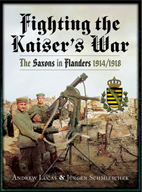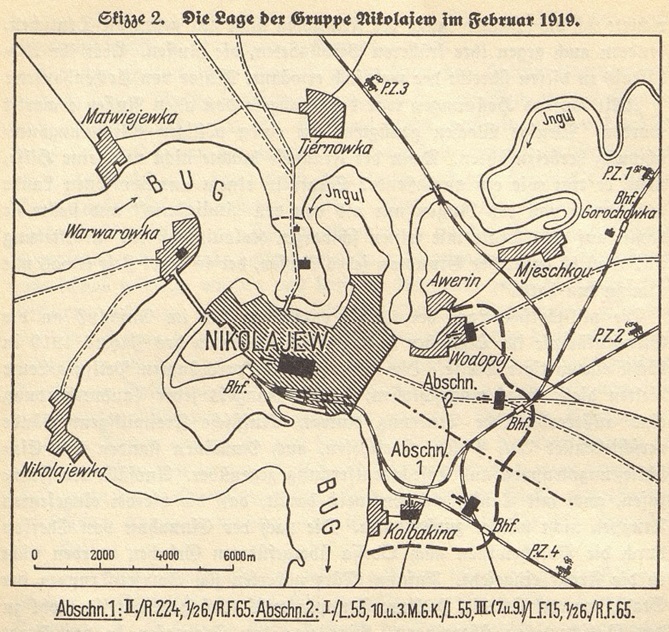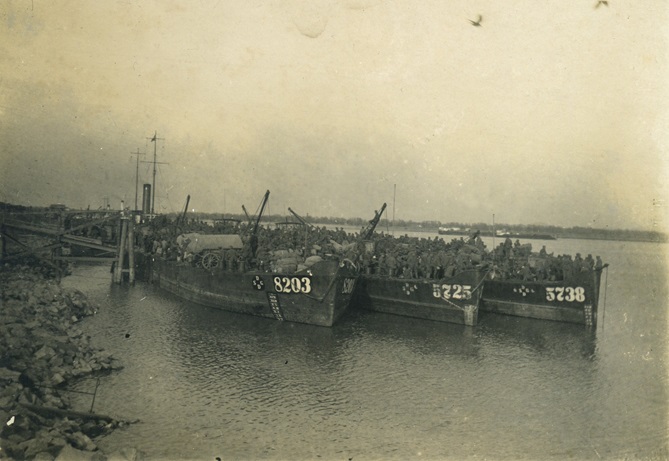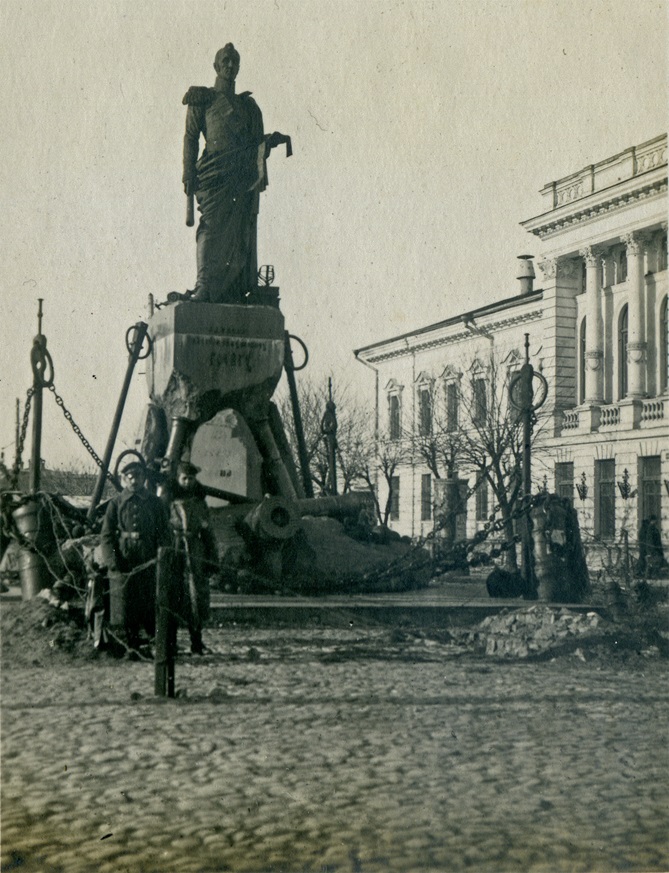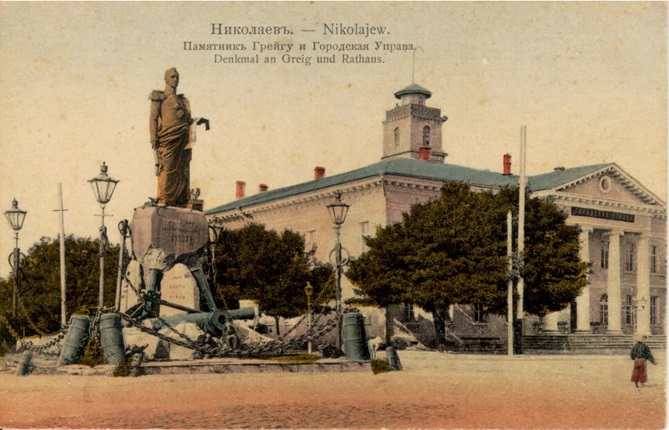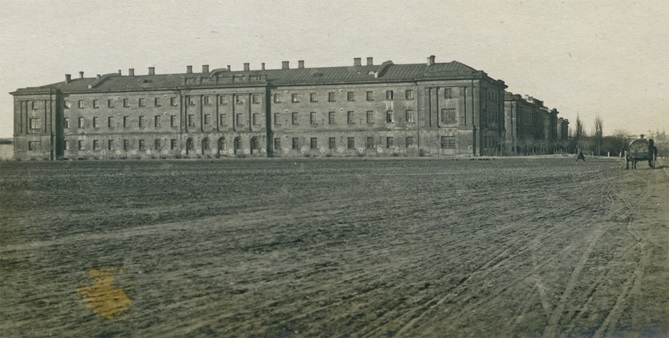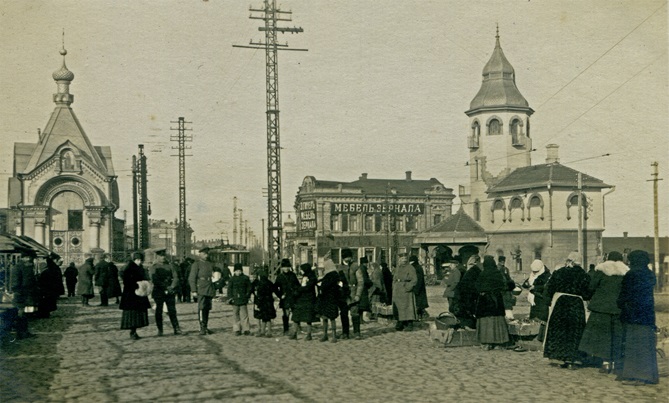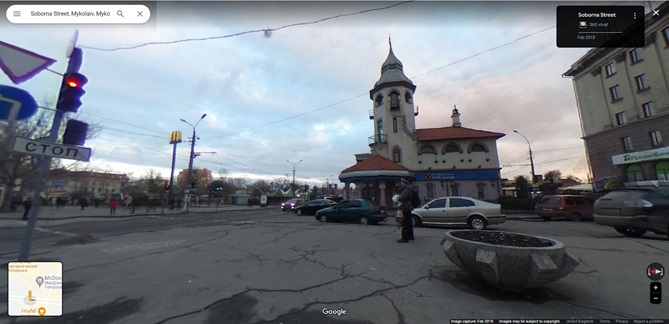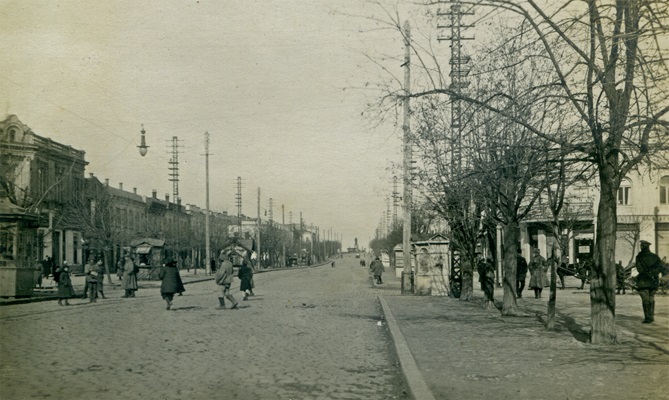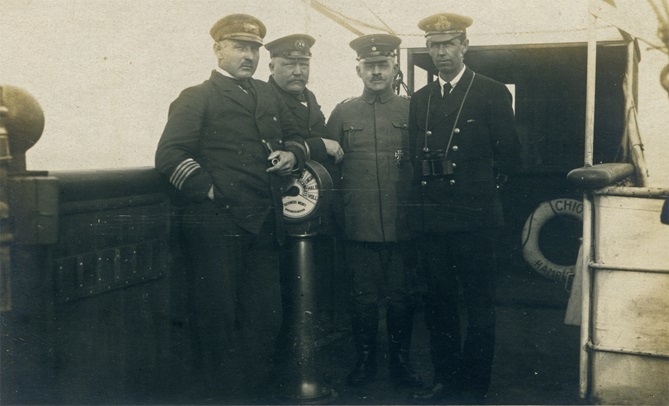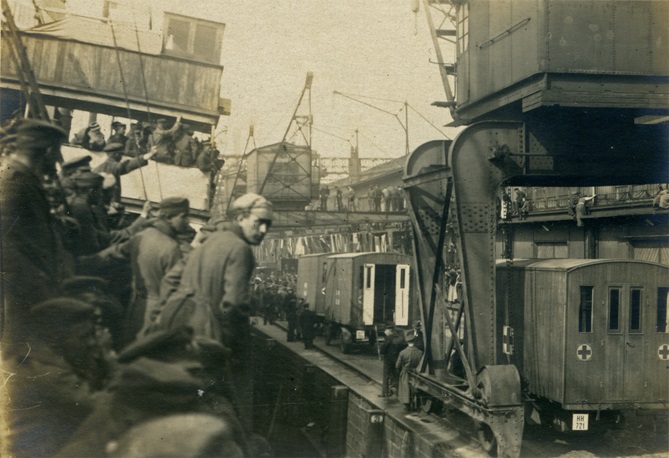My article An 'Argonaut Voyage' into Chaos - Saxon 212. Infanterie-Division in Southern Ukraine, April 1918 - March 1919 in Stand To! Number 132 ('Ukraine special', October 2023) benefited greatly from a very generous maximum word allowance by current editor Matt Leonard, but it was nonetheless necessary to make some painful cuts. Many colourful anecdotes had to be sacrificed, and I had to give up any hope of being able to quote at any length from my sources.
My original notes (including a detailed chronology assembled from all the available sources) amounted to a ridiculous 73 pages of A4, from which I then spent longer than I care to recall assembling and repeatedly condensing a coherent narrative!
Despite the enormous amount of work involved, I am very pleased with the result and honoured to be published alongside such distinguished authors as Sir Hew Strachan, Cordon Corrigan and my role model Jack Sheldon. The full list of contents for this issue can be seen on the WFA website here (WFA members can log in to download a PDF copy from this page).
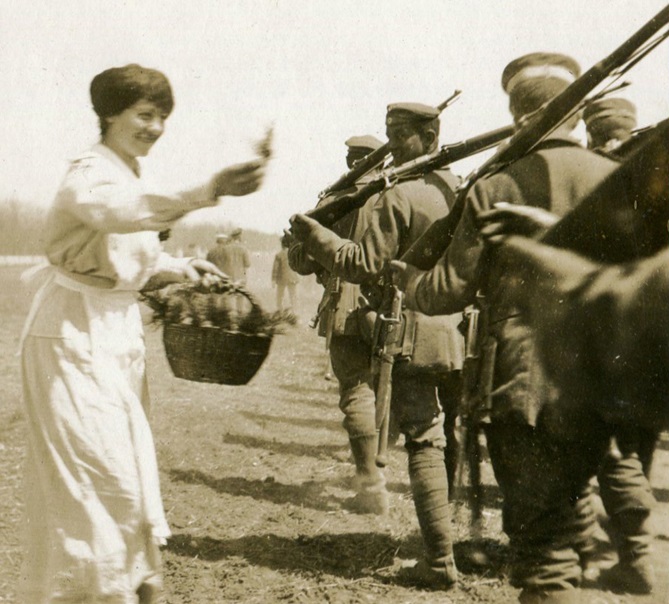
In due course I may release a longer edit of the article incorporating a lot of the material which had to be cut for length. I may also translate some excerpts from the personal accounts in the regimental histories of 212. Infanterie-Division, which are remarkably frank and colourful. In addition I may flesh out the biographies of the officers I mention by name; these include the redoubtable Oberleutnant der Reserve Pache, who features prominently in our books on the Saxons in Flanders.
For now I will present some additional maps to supplement the rough annotated sketchmap (based on one taken from the history of FAR 279) which appears in the published article. I will also present some of our wealth of original photographs from 212.ID beyond the small selection which made it into the published piece.
Except in the case of the first map, simply click on the image to open it at full size in another browser tab or window.
For detailed information on historical locations of Black Sea German settlements in Ukraine I heartily recommend the detailed map overlays maintained at Germans from Russia Settlement Locations.
Above: Map (found online, source unknown) depicting distribution of German and Austro-Hungarian corps and divisions within the Ukrainian State (AKA the 'Hetmanate') and adjacent territories, 1st November 1918.
Above: Map (found online, source unknown) showing the territorial divisions of the Ukrainian State. The striped areas of Crimea and adjacent Russia were states in their own right which sought alliance and/or federation with Ukraine late in 1918 for mutual defense against the Bolsheviks. The orange area above Crimea is the old imperial Taurida Governate (Taurien to the Germans) which was occupied by 212.ID.
Above: Map from the regimental history of IR 415 showing their district of occupation as of 2nd June 1918, including division into company sub-districts as well as locations of regimental and battalion staffs and of the regiment's organic support weapons (machine-guns and light Minenwerfers). Note the lack of railway lines within the district, necessitating reliance on the Dniepr and the road network (such as it was) for internal transport.
Above: Map from Die Rückführung des Ostheeres showing Nikolajew / Mykolaiv and its defensive perimeter as of February 1919. Note especially the locations of the railway lines and their allocation to the German garrison's four improvised armoured trains (Panzerzug I-IV)
Simply click on each image to open it at full size in another browser tab or window.
NEW (29/08/2024): I recently acquired this undated photo of German troops loaded onto barges (towed by a tug) at Brăila for transport on the Danube to Cernavodă.
According to the regimental histories, the foot troops of 212.ID travelled just like this on this exact route in April 1918, and I believe that this photo records the departure of one of those contingents. At Cernavodă the Bucharest-Constanța railway line provided onward transportation to the coast. As for the mounted troops of the division, the hussars (5. / HR 18) travelled aboard the transport steamer Margarita from Brăila along the Danube and onward to Ukraine in mid-May. Some elements of FAR 279 came by the same route as the foot troops, others by rail through Bessarabia (ex-Russian territory under Romanian occupation, where Central Powers troops were permitted transit as per the peace agreement with Romania which was then in force); the artillery regiment did not complete its transit to Ukraine until the end of May.
These next two photos depict the division's voyage from Constanza (Constanța) on the Romanian Black Sea coast to Ukraine, a process which began in late April and was not complete until the end of May. The regimental historians whimsically describe this adventure as an Argonautenfahrt ('Voyage of the Argonauts').
As explained in the article, some of the divisional artillery came by rail via Romanian-occupied Bessarabia (under the terms of the peace agreement with that nation).
Above: IR 182 (minus its III. Bataillon) deployed for embarkation at Constanza aboard the General, an 8000-ton vessel of the Deutsch-Ostafrika-Linie. This photo was probably taken on 20th April 1918, as the regimental history records that their embarkation began on that day; the ship departed on the afternoon of the 22nd escorted by two Turkish torpedo boats, and reached Nikolajew / Mykolaiv on the 24th.
Visible in the background on the right is Kazak, a former merchant steamer built in Newcastle in 1890 under the name Kazan and in Russian naval service as Transport No. 35 since 10th March 1915. She was captured by the German submarine UC 23 off Sevastopol on 14th April 1918 and immediately pressed into service (see our detailed discussion of this photo on the Great War Forum).
This and all of the following photos belong to the Andrew Lucas collection unless otherwise specified.
Above: The Nachrichtenzug (signals platoon) of II. Bataillon / IR 182 posing on the deck of the General on 23rd April 1918, when the ship docked at Odessa before proceeding along the coast and up the Bug to Nikolajew / Mykolaiv. Note the preponderance of Iron Cross 2nd class ribbons, testament to the regiment's long and impressive combat record.
CREDIT: Jürgen Schmieschek collection
Simply click on each image to open it at full size in another browser tab or window.
The following photos belong to a large series of pictures taken by an unknown member (probably an officer) of IR 415 in and around Nikolajew / Mykolaiv at some point between October 1918 and the final German evacuation on 16th March 1919, as well as on the voyage home aboard the steamer Stambul.
Some pictures from this series are reproduced in the IR 415 regimental history. I included two in the article (Fig. 7 and 8). Multiple prints of some of the photos have been seen to exist; the ones in my collection all have typewritten captions on the reverse and nothing to identify the studio where they were printed.
Above: Construction in progress at Soldatenfriedhof Nikolajew. This German military cemetery is known to have contained 150 dead including 48 from the initial fighting for the city in March 1918, thirteen from Saxon units of 212.ID and one German nurse. A further three German soldiers (all from Prussian units) were buried in a Jewish cemetery. This cemetery was not rediscovered in 1990 and its exact location and fate are unknown. A published list of names taken from W. Fest, Nikolajew, der letzte deutsche Posten am Schwarzen Meer (Duisburg 1919) can be found on denkmalprojekt.org.
Above: The planned final appearance of the cemetery, including tastefully arranged trees and a central memorial. Like so many other German projects in Ukraine, it would never come to fruition. Nikolajew, der letzte deutsche Posten am Schwarzen Meer provides the following credits: "Design of the entire site Gefreiter Pries, modeling work for the 5 metre high memorial Gefreiter Beyer, construction of the foundation for the memorial and installation work Sergeant Weller, landscaping and crosses Oberleutnant Eulen."
Above: Statue of the Scottish-Russian Admiral Aleksey Greig (1775-1845) in Mykolaiv, from the same series of photos taken by an unknown 415er in late 1918 or early 1919. Greig was from 1816 to 1833 both commander of the Black Sea Fleet and a popular and successful governor of Sevastopol and Mykolaiv, where he was responsible for numerous reforms and improvements. This statue was erected in his honour in 1875 at the corner of Admiralstrasse (Admiralska) and Alexandrowskaja (Soborna) facing the Inhul river. Sadly it did not survive Bolshevik rule, while the City Duma building on Greig's left did not survive the fighting here during the Second World War. The Lenin statue which displaced Greig has also subsequently been destroyed (twice!).
Above: Street scene from besieged Mykolaiv, looking northeast up the Alexandrowskaja (Soborna) at the junction with the Chersonskaja (Central Avenue). The Londonskaja Hotel (Fig. 7 in the article) lay 700 metres further up the Alexandrowskaja in this direction, on the far right-hand corner of the junction with the Spaszkaja (Spas'ka). The regimental staff of IR 415 was based on the Spaszkaja, though apparently not at the hotel (which served as a Soldatenheim).
Relations between German soldiers and civilians (mainly women and children) at this apparent street market seem very casual, with no-one visibly armed. For this reason I suspect that this photo was taken early in IR 415's time in the city, in October or November 1918.
Above: Today (or at least, when last photographed for Google) this location can only still be recognised thanks to the continued survival of the tram substation on the right, built in Art Nouveau style in 1914. Whether it has survived the current conflict is currently unknown to me (image from Google Streetview).
Above: Further up the Alexandrowskaja (Soborna), the Admiral Greig memorial is now visible in the distance at the skyline. Since the admiral faces the Ingul, from this angle he has his back to the camera.
Simply click on each image to open it at full size in another browser tab or window.
The following photos are from the homeward voyage in March-June 1919 aboard the passenger steamer Stamboul, one of a number of German freighters operating with the Ottoman Navy since 1914. See this thread on the Great War Forum for a full discussion of its history.
According to this thread on GMIC (source unclear) the units evacuated aboard the Stambul comprised the following; units marked in red have not yet been corroborated exactly by additional sources. If these figures are correct the Saxons comprised about two thirds of the total complement of 2,171 passengers.
I.& II. / IR 415 (1350 men - presumably meaning 'all ranks')
6. / FAR 279 (100 men)
'Elements' of (Württemberg) 7. Ldw. Div. (210 men)
?. / REIR 2 (260 men)
Fuhrpark-Kolonne 267 (80 men)
Div.-Funker-Abt. 109, Gebirgs-Funker-Abt. 2 and a überplanmäßiger F.-Station ("supernumerary telephone station"; total 40 men for all three small units)
Bäckerei-Kolonne 70 (25 men)
Bäckerei-Kolonne 78 (15 men)
Feldschlächterei 184 (15 men)
Feldpost 149 (6 men)
Soldatenheim Nikolajew and Krim (85 men)
Above: This group are the 'commanding officers' of the Stambul. I believe that the two gentlemen on the left are officers of the ship's crew. The third man has a very dark cap band and collar piping, plus what looks like a Saxon reserve cockade. I believe he is most probably an officer of 6. / FAR 279, but have not yet been able to put a definite name to his face. As the sole officer present from the passenger complement he is presumably the currently acting Transportführer, with authority over the embarked troops... though the battalion commanders of IR 415 would surely outrank him even if he were the battery commander. The fourth man must surely be the 'British escort officer' who joined Stambul at Constantinople. He is mentioned as dealing with a British 'military commission' intent on coming aboard and searching for weapons while Stambul and the accompanying Varna (with III./415 and others aboard) were anchored off Deal on 11th April 1919.
The lifebelt in the background is from Chios, another German freighter in Ottoman service which was torpedoed in August 1915. We can only surmise that some components and fixtures from the wreck must have been salvaged and reused on the battle-damaged Stambul when the latter was repaired and refitted in early 1918.
Above: Not surprisingly our unknown photographer recorded the final homecoming of the Stambul to Hamburg on 17th April 1919, and the resulting photo was also chosen to appear in the regimental history of IR 415. According to that work, it was a glorious sunny day. Stambul was played into harbour by a naval band in a pinnace, and greeted at the quay by Senator Dr. Hagedorn. This would be her last voyage in German service, as the ship would now be surrendered to the British and resume commercial service until 1937.
The ship had been quarantined at anchor at Brunsbüttel since the 13th, and we can see here that ambulances had been prepared for her arrival in Hamburg. The entire ship's complement were deloused and issued with fresh clothing, after which they expected to be free (as all the necessary discharge papers had been prepared in advance during the voyage).
In the evening uproar ensued when it was announced that due to a single typhus case on board the ship, they would all be spending three weeks in quarantine at Lockstedter Lager. This order was soon annulled in the face of general outrage. The first rail transport of 415ers set out for Dresden via Berlin early on the 18th, but was halted at Elsterwerda near the Saxon border and ordered to proceed to the Saxon Truppenübungsplatz Königsbrück for quarantine. In response virtually everyone simply left the train without orders, rendering the point moot. A small administrative detail brought the regimental paperwork to the barracks of IR 177 in Dresden, where IR 415 was officially dissolved on 1st June.

